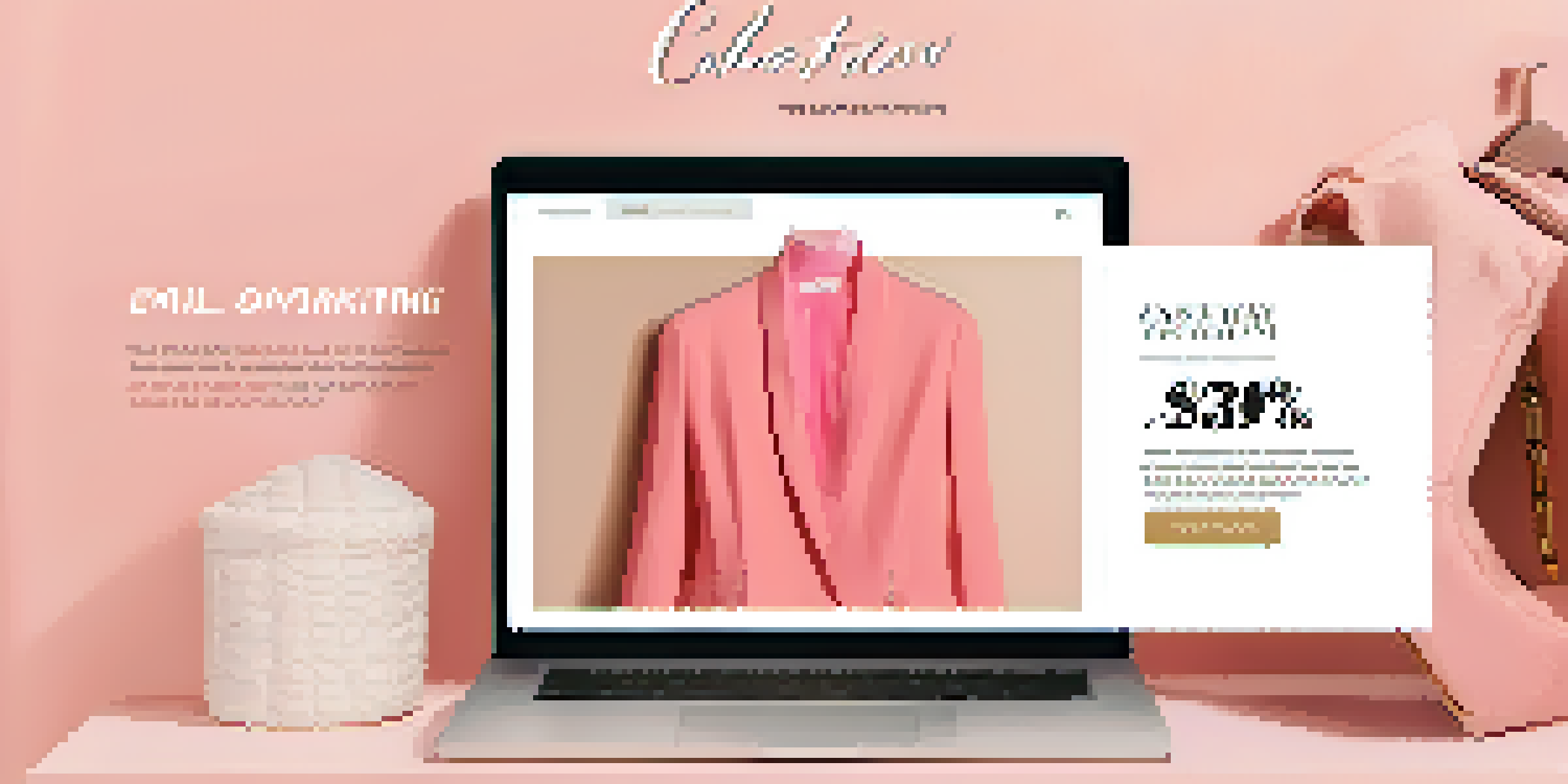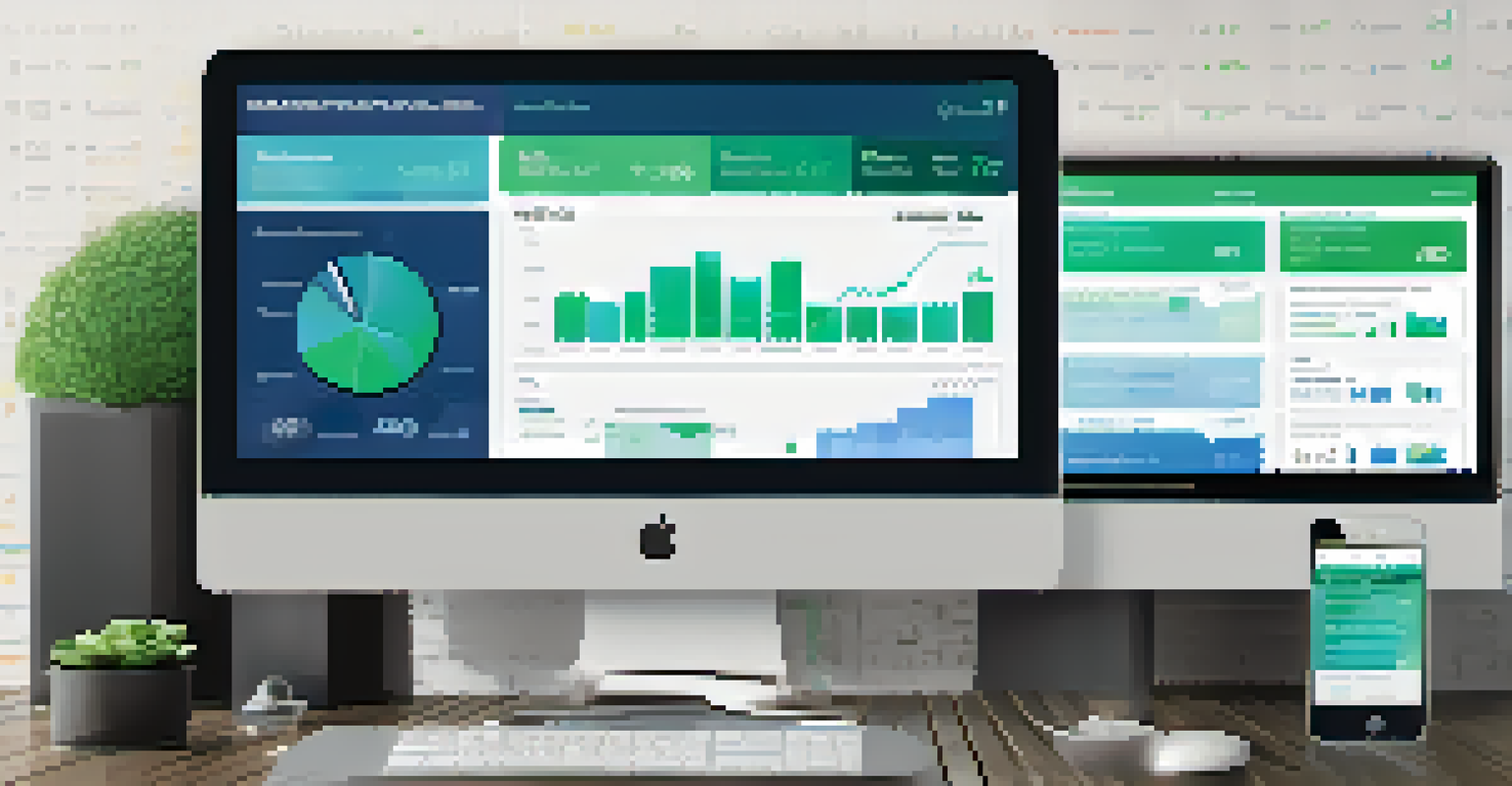Email Marketing Strategies for Fashion Retailers

Understanding Your Audience for Tailored Campaigns
To create impactful email marketing campaigns, knowing your audience is key. For fashion retailers, this means understanding customer preferences, shopping habits, and demographics. By segmenting your audience based on these factors, you can personalize your messages, making them more relevant and engaging.
The greatest asset of a company is its people. There is no such thing as a one-size-fits-all solution in marketing; understanding your audience is key.
For instance, a young adult audience might respond better to trendy styles and promotions, while an older demographic may appreciate classic pieces and timeless fashion advice. This level of personalization not only increases open rates but also boosts conversion rates, leading to higher sales.
Using data analytics tools can help you gather insights about your customers. By tracking their interactions and preferences, you can continuously refine your email marketing strategy, ensuring that your campaigns resonate with your audience.
Crafting Eye-Catching Subject Lines
Your email subject line is your first impression, and it needs to grab attention immediately. Think of it as the storefront of your digital shop; if it doesn’t entice the customer, they’ll walk right past. A great subject line is concise, intriguing, and gives a taste of what’s inside.

For example, instead of a generic 'New Arrivals', try something like 'Unlock the Latest Trends for Fall – Shop Now!' This creates a sense of urgency and curiosity. Additionally, incorporating emojis can make your subject lines stand out in crowded inboxes, but use them sparingly to maintain professionalism.
Know Your Audience for Success
Understanding customer preferences and demographics allows for personalized email marketing, enhancing engagement and conversion rates.
Remember to A/B test different subject lines to see what resonates best with your audience. Analyzing the results will help you refine your approach, ensuring higher open rates for future campaigns.
Utilizing Segmentation for Targeted Messaging
Segmentation is a powerful tool in email marketing, allowing you to send targeted messages to specific groups within your audience. For fashion retailers, this could mean creating segments based on purchase history, location, or even browsing behavior. This way, your emails can speak directly to the interests of each group.
Content is fire; social media is gasoline.
For instance, if a customer frequently buys athletic wear, sending them emails about new arrivals in that category will likely resonate more than a general promotion. This targeted approach not only improves engagement but also fosters customer loyalty as they feel understood and valued.
By regularly updating your segments and analyzing their performance, you can ensure that your email content remains relevant and appealing, driving more conversions.
Designing Visually Appealing Emails
In the world of fashion, visuals are everything. Your email design should reflect the aesthetic of your brand while ensuring that it’s easy to navigate. High-quality images of your products can entice customers and encourage them to click through to your website.
Consider using a clean layout with plenty of white space to draw attention to key elements, like product highlights or special offers. Utilizing tools like responsive design ensures that your emails look great on any device, catering to the growing number of mobile shoppers.
Effective Subject Lines Matter
Crafting eye-catching subject lines creates urgency and curiosity, significantly improving open rates for your email campaigns.
Don’t forget to include clear calls to action (CTAs) that guide your readers on what to do next, whether it’s 'Shop Now,' 'View Collection,' or 'Get the Look.' An appealing design combined with strong CTAs can significantly increase your email’s effectiveness.
Incorporating User-Generated Content
User-generated content (UGC) is an effective way to build community and trust around your brand. By showcasing photos and reviews from your customers, you create a sense of authenticity that resonates with potential buyers. This is especially important in the fashion industry, where personal style and social proof play significant roles in purchasing decisions.
Encouraging customers to share their looks on social media and tagging your brand can provide you with a wealth of content to include in your emails. For example, featuring a 'Customer of the Month' or highlighting how customers style your products can inspire others to engage with your brand.
Including UGC not only enriches your email content but also fosters a sense of belonging among your customers, making them feel part of a larger community.
Timing and Frequency of Your Emails
Finding the right timing and frequency for your email campaigns is crucial for maximum impact. Sending too many emails can overwhelm your audience, leading to unsubscribes, while too few can result in your brand being forgotten. Striking the right balance requires understanding your audience's habits and preferences.
Research suggests that sending emails on weekdays, particularly Tuesday and Thursday, tends to yield higher open rates. Additionally, consider the time of day; many people check their emails in the morning or during lunch breaks, so timing your sends accordingly can enhance engagement.
Segment for Targeted Messaging
Utilizing segmentation helps deliver tailored messages to specific groups, increasing relevance and fostering customer loyalty.
Experimenting with different sending schedules and monitoring results will help you hone in on the optimal frequency for your audience, ensuring your messages are welcomed rather than ignored.
Analyzing Performance and Adjusting Strategies
Regularly analyzing the performance of your email campaigns is essential to understanding what works and what doesn’t. Key metrics to track include open rates, click-through rates, and conversion rates. This data provides valuable insights into your audience's preferences and behaviors, allowing you to make informed adjustments.
For example, if you notice that subject lines with specific keywords result in higher open rates, you can incorporate similar language in future campaigns. Additionally, A/B testing can reveal which content resonates best, guiding your creative direction.

By continuously refining your strategies based on performance data, you can enhance the effectiveness of your email marketing efforts, driving better results over time.